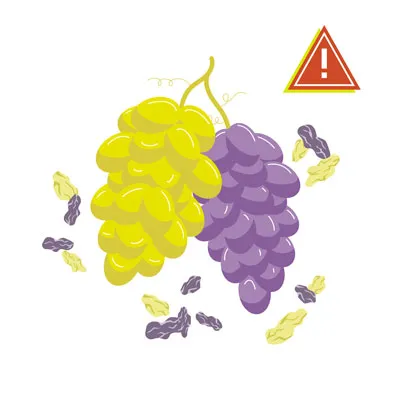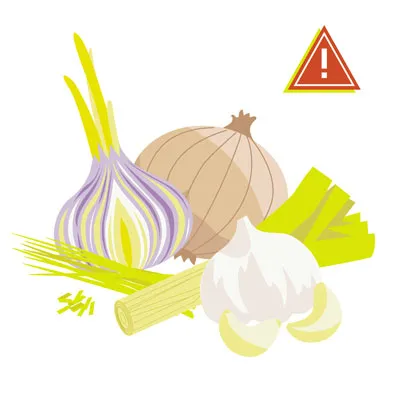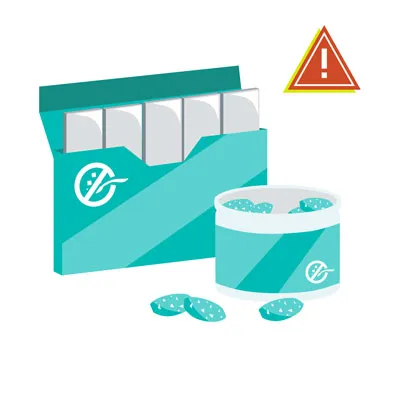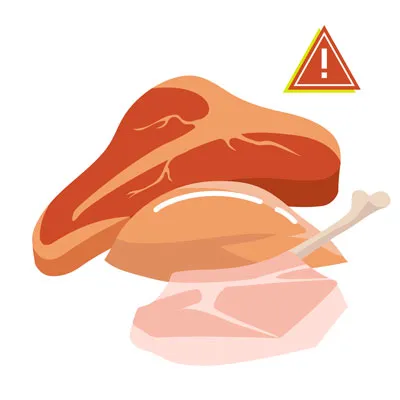As a dedicated pet parent, you want to ensure your beloved canine companion leads a long, healthy, and happy life. This often includes sharing bits of your own food, a gesture of affection that can unfortunately turn dangerous. While some human foods are perfectly safe and even beneficial for dogs, many others can be highly toxic, leading to severe illness or even death. Understanding What Food A Dog Cannot Eat is crucial for preventing accidental poisonings, which sadly affect hundreds of thousands of pets annually.
Navigating the complexities of canine nutrition can be challenging, as dogs metabolize substances very differently from humans. A seemingly harmless treat for us could be lethal for our furry friends. For instance, theobromine in chocolate, which humans process easily, accumulates in a dog’s system, becoming toxic. Similarly, the cyanide found in the pits, stems, and leaves of certain fruits, while usually not a major concern for humans, can pose a significant risk to dogs if consumed in large quantities. This guide aims to be your essential resource, a “cheat sheet” to help you identify the foods that are bad for dogs and keep your pet safe. For those wondering about safe alternatives, exploring what human food can i give to my dog can provide valuable insights.
Understanding Why Certain Foods Are Toxic to Dogs
The fundamental difference between human and canine digestion and metabolism lies at the heart of food toxicity. Dogs’ bodies are simply not equipped to process certain compounds that are benign to humans. This disparity can lead to a rapid buildup of toxins in their system, resulting in various adverse reactions, from mild digestive upset to life-threatening conditions. For example, the slower metabolism of theobromine and caffeine in chocolate is why even small amounts can be devastating for dogs.
Furthermore, the physical characteristics of some foods, like the hard pits of fruits, can cause mechanical obstructions in a dog’s gastrointestinal tract, leading to severe discomfort and potentially requiring emergency veterinary intervention. It’s also important to remember that a dog’s size, breed, and existing health conditions can influence their susceptibility to food toxicities. Smaller breeds, for instance, are generally more vulnerable to toxins due to their lower body weight. Always consult your veterinarian if you have questions about specific foods or suspect your dog has ingested something harmful.
The Definitive List of Foods Your Dog Cannot Eat
Many common household foods are dangerous, and often toxic, for dogs. It’s vital to be aware of these items to prevent accidental ingestion. This list highlights key foods to avoid, though it’s not exhaustive and vigilance is always recommended.
1. Alcohol
Because dogs and cats are significantly smaller than humans, alcohol can have a far more potent and dangerous effect on them. Even minimal amounts can cause harm, and the risk increases with smaller pets. Symptoms of alcohol poisoning in dogs mirror those in humans, including vomiting, breathing difficulties, coma, and even death.
 Alcoholic beverages can be deadly for dogs due to their smaller size and different metabolism
Alcoholic beverages can be deadly for dogs due to their smaller size and different metabolism
2. Apple, Apricot, Cherry, and Plum Seeds/Pits
While the fleshy part of apples is generally safe for dogs, the core and seeds are not. Apple seeds contain cyanide, and while small amounts might not be immediately dangerous, it’s safest to remove the core and seeds entirely. Similarly, apricot, cherry, peach, and plum seeds and pits also contain cyanide, which can cause severe symptoms like vomiting, irregular heartbeats, seizures, coma, and even death by preventing red blood cells from carrying oxygen effectively.
3. Avocado
Avocados are not a good dietary choice for dogs. While the exact toxic mechanism in dogs is debated, avocados are known to cause issues in other mammal species. More concretely, an intact avocado pit poses a significant choking hazard and can obstruct a dog’s GI tract. Therefore, it’s best to keep this fruit away from your canine companion.
4. Broccoli
Broccoli contains isothiocyanates, which can be harmful to pets in very large doses. While small, occasional amounts might be acceptable, it’s often best to avoid it given the abundance of other healthy and safe vegetable options. Additionally, broccoli stalks can be a choking hazard for dogs, potentially causing an obstruction in their throat. If you’re looking for more information on which vegetables are safe or unsafe, consider reading what veggies can dogs not have.
5. Caffeine and Coffee Grounds
Caffeine contains methylxanthines, compounds that can cause potentially fatal symptoms such as diarrhea, vomiting, seizures, and irregular heart rhythms in dogs. Ingesting coffee grounds or high-caffeine drinks can lead to a dangerously racing heart, tremors, arrhythmia, difficulty breathing, and other severe signs of toxicity.
6. Chicken and Turkey Skin, Ham, and Other Fatty Cuts of Meat
Fatty cuts of meat, including ham and the skin from chicken or turkey, should be avoided as treats for pets. Their high fat content can trigger acute pancreatitis, a life-threatening illness with severe complications. Furthermore, turkey and chicken bones are particularly dangerous. They can splinter, leading to obstructions in the bowels or puncturing the stomach or intestines, which may result in a fatal abdominal infection.
7. Chocolate
Chocolate toxicity is a frequent cause of pet poisoning. Dogs absolutely cannot consume any chocolate product. Chocolate contains theobromine, a lethal compound whose concentration is higher in darker chocolates. It also contains caffeine, and some sugar-free chocolates may contain xylitol, both of which are toxic to dogs. Dogs and cats cannot metabolize chocolate as efficiently as humans. Dark and baker’s chocolate are the most dangerous, but all types of chocolate pose a risk. Symptoms can include hyperactivity, vomiting, diarrhea, pancreatitis, abnormal heart rhythm, and seizures. Immediate veterinary attention is required if your dog ingests any amount of chocolate.
 Dark chocolate is highly toxic to dogs, containing theobromine and caffeine which can cause serious health issues
Dark chocolate is highly toxic to dogs, containing theobromine and caffeine which can cause serious health issues
8. Grapes and Raisins
Grapes and raisins are exceptionally dangerous to dogs. These fruits can cause severe problems, including acute kidney failure, due to their tartaric acid content. Even a small number of grapes or raisins can wreak havoc. Symptoms of grape or raisin poisoning include vomiting, diarrhea, loss of appetite, changes in urination frequency, or complete absence of urine production.
 Grapes and raisins are highly toxic to dogs, potentially causing severe kidney failure even in small amounts
Grapes and raisins are highly toxic to dogs, potentially causing severe kidney failure even in small amounts
9. Macadamia Nuts, Almonds, and Pistachios
Macadamia nuts are highly toxic to dogs, causing symptoms like weakness, overheating, and vomiting. As few as six nuts can lead to severe poisoning in a small dog. While the exact mechanism of toxicity is not fully understood, these nuts should be strictly avoided. Other nuts like almonds and pistachios, while not as toxic, can be choking hazards or problematic if they are salted, flavored, or spiced.
10. Milk and Dairy Products
The suitability of milk and dairy products for dogs varies. Some dogs can consume them without issue, while others are lactose intolerant or allergic, experiencing diarrhea and gas from cow’s milk. Ice cream is generally bad due to its high sugar and fat content. As a healthier alternative, try freezing small pieces of dog-safe fruits. Small quantities of lower-fat cheese can be given as a treat if your dog tolerates dairy.
11. Mushrooms
It’s safest to avoid feeding your dog any type of mushroom. Wild mushrooms, in particular, can contain various toxins that may cause kidney and liver failure, vomiting, diarrhea, hallucinations, and damage to red blood cells. While washed white mushrooms from grocery stores might be considered safe, it’s probably best to opt for a different, confirmed-safe treat to eliminate any risk.
12. Nutmeg and Cinnamon
Dogs should never be given foods containing nutmeg. This spice can induce hallucinations and severe vomiting due to a compound called myristicin, especially in high doses or for smaller dogs. If your dog ingests any amount of nutmeg, contact your veterinarian immediately. Cinnamon should also be avoided, not primarily for toxicity, but because it can irritate a dog’s mouth and potentially lead to low blood sugar, which can have serious health consequences.
13. Onions, Garlic, Chives, and Leeks
Many pet owners are surprised to learn that herbs from the allium family, including onions, garlic, chives, and leeks, are unsafe for dogs. These plants contain sulfoxides and disulfides, compounds that can damage red blood cells and cause anemia in both dogs and cats. Be especially cautious with prepared foods, even baby food, as they often contain onion and garlic powders; always read labels. All allium plants can cause potentially fatal anemia, and certain Japanese breeds, like Akitas and Shiba Inus, are particularly sensitive. For insights into specific breed sensitivities, understanding what can bichon frise not eat might be helpful.
 Onions, garlic, chives, and leeks contain compounds that can damage a dog's red blood cells, leading to anemia
Onions, garlic, chives, and leeks contain compounds that can damage a dog's red blood cells, leading to anemia
14. Salt
Excessive salt intake can disrupt the fluid balance in a dog’s cells, leading to tremors, seizures, diarrhea, or even a coma. Whether it’s rock salt, homemade playdough, or potato chips, resist those sad puppy eyes to protect their health.
15. Spicy Food
Keep all spicy foods away from your dog. Hot and spicy ingredients can cause vomiting, stomach ulcers, or diarrhea, which can be incredibly painful for your dog and potentially costly for emergency veterinary care.
16. Sugar-Free Gum and Candy (Xylitol)
Xylitol is an artificial sweetener found in many human products, including sugar-free gum, candy, and baked goods. In dogs, even small amounts can cause a rapid and dangerous drop in blood sugar, leading to weakness and seizures. Some dogs may also develop liver failure. The alarming rise in xylitol poisoning cases highlights its danger; just five pieces of gum containing xylitol can be fatal for a 65-pound dog.
 Sugar-free gum and candies containing xylitol can cause a rapid, fatal drop in blood sugar for dogs
Sugar-free gum and candies containing xylitol can cause a rapid, fatal drop in blood sugar for dogs
17. Tomatoes and Raw Potatoes
Tomatoes and potatoes have a nuanced safety profile. Ripe red tomatoes are generally fine, but the green parts of the tomato plant, and unripe green tomatoes, contain solanine, which is toxic to dogs. Similarly, baked or boiled potatoes without additives are safe in small amounts. However, raw potatoes also contain solanine and are toxic.
18. Tobacco
Tobacco and nicotine-containing products are extremely dangerous for dogs. Exposure can cause a range of symptoms including vomiting, diarrhea, rapid or labored breathing, agitation, abnormal heart rate, wobbliness, weak muscles, blood pressure fluctuations, seizures, and tremors. More significant exposure can lead to blue gums, coma, and can ultimately be fatal. Due to a dog’s natural curiosity, they might ingest cigarette butts from sidewalks or ashtrays. If your dog gets into tobacco, seek immediate veterinary attention.
19. Yeast and Raw Dough
Yeast and raw dough are unsafe for dogs for two main reasons. First, raw dough can expand significantly in a dog’s stomach, causing severe pain and potentially life-threatening gastric torsion or rupture. Second, the yeast and sugar in raw dough ferment, producing alcohol, which can lead to alcohol toxicity. This condition is often fatal and requires immediate medical intervention.
20. Raw Meat
Never feed your dog raw or undercooked meat. Raw meat can carry harmful bacteria like Salmonella or E. coli, which can sicken not only humans but also dogs. Furthermore, bones in raw meat pose a severe choking hazard and can splinter, causing internal injuries.
 Feeding raw or undercooked meat to dogs carries risks of bacterial contamination and choking hazards from bones
Feeding raw or undercooked meat to dogs carries risks of bacterial contamination and choking hazards from bones
21. Rhubarb
Rhubarb, commonly used in desserts, is not safe for pets. Its leaves contain soluble calcium oxalate crystals which, if consumed in sufficient quantities, can bind with calcium in the body, causing a dangerous drop in calcium levels and potentially leading to renal failure. Symptoms include tremors, weakness, drooling, bloody urine, changes in thirst and urination, and vomiting.
22. Star Fruit
Similar to rhubarb, star fruit also contains soluble calcium oxalate crystals and should not be fed to your dog.
23. Flavored Water and Seltzer Water
It’s always best to provide your dog with fresh, clean, plain water. Flavored or carbonated waters can contain added ingredients like sugar or salt that are dangerous to pups. While plain seltzer water might be acceptable in small, urgent amounts, it can still cause gas and bloating. Sticking to plain water is the safest choice.
Safe Human Foods Your Dog Can Enjoy
While the list of what food a dog cannot eat is extensive, there are plenty of human foods that are safe and healthy for your dog. Offering these as treats can be a wonderful way to bond and supplement their diet. For a comprehensive guide, refer to what food can i feed my dog.
1. Apples, Oranges, and Bananas
The fleshy parts of apples, with the core and seeds removed, are perfectly safe. Always cut apples into small pieces to prevent choking and avoid the toxic core. Oranges can be given in small amounts. Bananas, in moderation and with the peel removed, are also a tasty treat.
2. Blueberries and Blackberries
These berries are excellent treats! Blueberries are packed with antioxidants, fiber, phytochemicals, and vitamin C, all beneficial for your dog’s health.
3. Cantaloupe, Mango, Peaches, Pears, Pineapples, and Watermelons
Many fruits can be safely enjoyed by your dog. Cantaloupe is a great starting point. Watermelon, with rinds and seeds removed, is especially refreshing on a warm day. Mangoes, peaches, pears, and pineapples are also safe in moderation, provided seeds, pits, and cores are removed.
4. Carrots, Cucumber, and Celery
These “three C’s” – carrots, cucumbers, and celery – are fantastic, low-calorie options, particularly beneficial for overweight dogs. Bite-sized carrot pieces offer a satisfying crunch. Celery can even help with bad breath, and cucumber slices provide vitamins and minerals with minimal carbohydrates or fats.
5. Cheese
Small amounts of lower-fat cheese can be an acceptable treat if your dog is not lactose intolerant. Mozzarella is a good option. Always avoid high-fat varieties and consult your vet for the best type.
6. Eggs
Fully cooked eggs are a delicious and nutritious treat. Scrambled eggs, in particular, can be soothing for an upset stomach and provide a good source of protein.
7. Peanuts, Peanut Butter, and Cashews
In small quantities, unsalted and unflavored peanuts and cashews are safe. Due to their high fat content, offer them sparingly. Peanut butter, in moderation, is a popular high-protein treat. Crucially, choose unsalted varieties and ensure it does not contain xylitol.
8. Popcorn and Corn
Air-popped, unsalted, and unbuttered popcorn can be a fun treat. Always check for unpopped kernels to prevent choking. Corn (off the cob) is also acceptable when prepared without butter, salt, or spices.
9. Coconut and Honey
Small amounts of coconut, including coconut milk and oil, are generally safe and may even assist with allergies. However, some dogs may experience digestive upset. Avoid coconut water. Honey, in moderation, is also safe and offers numerous vitamins and minerals.
10. Shrimp and Fish
Plain, fully cooked shrimp, with shells, heads, tails, and legs removed, is a great choice. Avoid any seasoned or buttered varieties. Boneless, plain, and fully cooked fish, especially salmon and sardines, is also permissible, ideally no more than twice a week. Plain, canned tuna (packed in water, not oil) is safe in moderation.
11. Turkey
Cooked turkey meat, without skin, fat, or bones, is a healthy and safe source of protein. Offer small, plain bites as a treat, avoiding any seasoned or salted preparations.
12. Grains, Wheat, and Quinoa
Small amounts of wheat or other grains are generally fine. Quinoa is a healthier grain option. Monitor for any signs of allergic reactions.
13. Green Beans
Many dogs enjoy green beans, whether raw, steamed, or from a can. They are safe, tasty, and healthy. Choose plain green beans without added spices, oils, or salt, and cut them into small pieces to prevent choking.
What Dogs Are Most at Risk if They Consume Toxic Foods?
While all dogs should avoid toxic foods, certain factors increase a dog’s risk level:
- Small breeds vs. large breeds: Smaller dogs are more vulnerable to toxins due to their lower body weight, making substances like chocolate particularly dangerous for them.
- Puppies: Younger dogs have less developed digestive and immune systems, making them more susceptible to various substances.
- Elderly dogs: Older dogs may be at higher risk due to pre-existing health conditions that can compromise their ability to process toxins.
- Dogs with pre-existing conditions: Conditions like diabetes or kidney disease can significantly heighten a dog’s risk when exposed to toxic foods.
Proactive Steps to Prevent Food Poisoning in Dogs
Accidents can happen, but proactive measures can significantly reduce the risk of your dog ingesting unsafe human food:
1. Store Foods Out of Reach
Ensure all toxic foods are stored securely out of your dog’s access. This means placing dangerous items on high shelves or in locked cabinets that your curious pup cannot open.
2. Avoid Feeding Dogs From Your Plate
Resist the urge to feed your dog from your plate or while you’re cooking, even for a small treat. This habit can teach them to beg for human food, increasing the likelihood of accidental ingestion of harmful items. It is safest to only provide treats specifically formulated for dogs.
3. Educate Family Members and Guests
Inform everyone in your household, including children and guests, about the dangers of feeding human food to your dog. Emphasize that no matter how tempting, they should not sneak any food to your pet.
4. Be Careful During Holidays
Exercise extra caution during holidays and festive periods. The increased activity and abundance of human food in the house can make it easy to lower your guard, creating more opportunities for your dog to access dangerous items. Have emergency contact information readily available for 24/7 veterinarians or poison control.
What To Do If Your Dog Eats Something Toxic
If you suspect your dog has eaten something toxic, acting quickly is paramount. Familiarize yourself with common symptoms of food toxicity, which can vary depending on what was ingested. These may include listlessness, distress, pain, vomiting, bloody stools, or a bloated, hard-feeling stomach, which can indicate a dangerous condition.
If you observe these symptoms, take the following immediate steps:
- Call your veterinarian or poison control center immediately. Time is critical for effective treatment and reducing hospitalization time.
- Gather all relevant information. Be prepared to tell them the type of food eaten, the estimated amount consumed, and the time of ingestion.
- Avoid home remedies. Do not attempt to induce vomiting or administer any home remedies unless specifically instructed by your veterinarian. Certain remedies can be harmful depending on the toxin involved.
Pets Best Can Help You Keep Your Dog Healthy
It can be overwhelming to keep track of all the human foods and household toxins that pose a threat to your dog. Dogs, with their indiscriminate tastes, sometimes even engage in behaviors like coprophagia, making vigilance all the more essential. By following this guide and remaining watchful, you can significantly protect your dog from harmful foods.
Fortunately, there’s a wide array of safe and healthy human foods your dog can enjoy! Discover which ones on our list your dog loves and reward them as treats for good behavior. When in doubt about any food, always consult your veterinarian. Pet insurance is an excellent way to prepare for unexpected encounters with toxins. Pets Best offers customizable dog and puppy insurance plans tailored to your pet’s needs. Additionally, Pets Best policyholders have access to a 24/7 Pet Helpline, providing expert veterinary advice whenever you’re concerned about something your pet may have eaten.
Sources/ Citations
- “Top 10 dog poisons,” Hilary Parker (5/2023), WebMD.
- “What happens if a dog eats chocolate?” (10/2023), Colorado State University.
- “Fruits and vegetables dogs can or can’t eat,” (3/2024), American Kennel Club.
- “Can dogs eat apples?” Hector Joy (12/2022), PetMD.
- “Can dogs eat plums?” Katie Koschalk (7/2023), Chewy.
- “Avocado (Persea spp) Toxicosis in Animals,” Cristine Hayes (9/2024), Merck Veterinary Manual.
- “People foods to avoid feeding your pets,” (n.d.), ASPCA.
- “People foods dogs can and can’t eat,” (3/2024), American Kennel Club.
- “Can dogs eat nuts?” Amanda Ardente (1/2023), PetMD.
- “Can dogs drink milk?” Sandra C. Mitchell (1/2024), PetMD.
- “Can dogs have nutmeg?” Barri J. Morrison (11/2023), PetMD.
- “Onion, garlic, chive, and leek poisoning in dogs,” Renee Schmid et al. (2024), VCA Animal Hospitals.
- “Can dogs eat tomatoes?” Anna Burke (10/2024), American Kennel Club.
- “Can dogs eat potatoes?” Katherine Ripley (11/2023), American Kennel Club.
- “What to do if your dog eats a cigarette butt,” (6/2023), American Kennel Club.
- “Dough & dogs: Why it’s bad and what you can do,” Lisa Goldstein (7/2024), Preventive Vet.
- “Rhubarb,” (n.d.), Pet Poison Helpline.
- “Can dogs drink carbonated water?” Heather Logue (n.d.), Rover.
- “What fruits can dogs eat?” Ellen Malmanger (2/2024), PetMD.
- “Can dogs have green beans?” Anna Burke (8/2022), American Kennel Club.
- “About pet food safety,” (4/2024), CDC.
